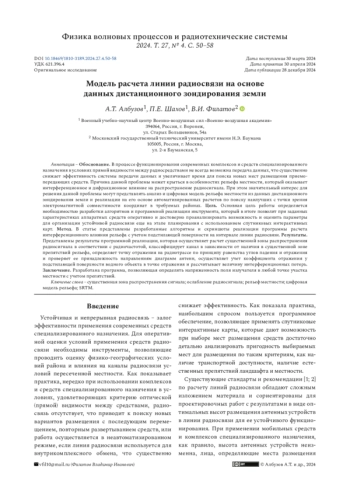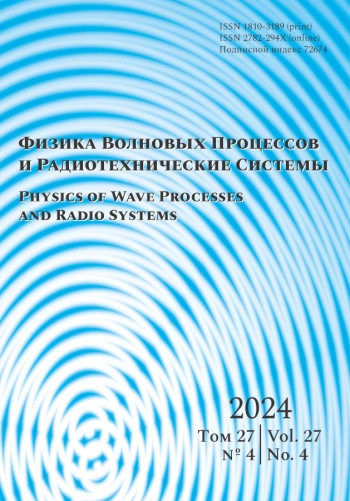Обоснование. В процессе функционирования современных комплексов и средств специализированного назначения в условиях прямой видимости между радиосредствами не всегда возможна передача данных, что существенно снижает эффективность системы передачи данных и увеличивает время для поиска новых мест размещения приемо-передающих средств. Причина данной проблемы может крыться в особенностях рельефа местности, который оказывает интерференционное и дифракционное влияние на распространение радиосигнала. При этом значительный интерес для решения данной проблемы могут представлять анализ и цифровая модель рельефа местности из данных дистанционного зондирования земли и реализации на его основе автоматизированных расчетов по поиску наилучших с точки зрения электромагнитной совместимости координат в требуемых районах.
Цель. Основная цель работы определяется необходимостью разработки алгоритмов и программной реализации инструмента, который в итоге позволит при заданных характеристиках аппаратных средств оперативно и достоверно проанализировать возможность и оценить параметры для организации устойчивой радиосвязи еще на этапе планирования c использованием спутниковых интерактивных карт. Метод. В статье представлены разработанные алгоритмы и скриншоты реализации программы расчета интерференционного влияния рельефа с учетом подстилающей поверхности на интервале линии радиосвязи.
Результаты. Представлены результаты программной реализации, которая осуществляет расчет существенной зоны распространения радиосигнала в соответствии с радиочастотой, классифицирует канал в зависимости от наличия в существенной зоне препятствий рельефа, определяет точку отражения на радиотрассе по принципу равенства углов падения и отражения и проверяет ее принадлежность направлениям диаграмм антенн, осуществляет учет коэффициента отражения у подстилающей поверхности водного объекта в точке отражения и рассчитывает величину интерференционных потерь.
Заключение. Разработана программа, позволяющая определять напряженность поля излучателя в любой точке участка местности с учетом препятствий.
Background. In the process of functioning of modern complexes and specialized equipment in conditions of direct visibility between radio facilities, data transmission is not always possible, which significantly reduces the efficiency of the data transmission system and increases the time to search for new locations for transceivers. The reason for this problem may lie in the peculiarities of the terrain, which has an interference and diffraction effect on the propagation of the radio signal. At the same time, analysis and a digital terrain model from earth remote sensing data and the implementation of automated calculations based on it to find the best coordinates in terms of electromagnetic compatibility in the required areas may be of significant interest for solving this problem.
Aim. The main purpose of the work is determined by the need to develop algorithms and software implementation of the tool, which will eventually allow, given the characteristics of the hardware, to promptly and adequately analyze the possibility and evaluate the parameters for organizing stable radio communications even at the planning stage using interactive satellite maps.
Methods. The article presents the developed algorithms and screenshots of the implementation of the program for calculating the interference effect of the relief, taking into account the underlying surface in the radio communication interval.
Results. The results of the program implementation are presented, which calculate the essential propagation zone of the radio signal in accordance with the radio frequency, classifies the channel depending on the presence of terrain obstacles in the essential zone, determines the reflection point on the radio path according to the principle of equality of angles of incidence and reflection and verifies its belonging to the directions of antenna diagrams, takes into account the reflection coefficient at the underlying surface of a water body at the reflection point and calculates the amount of interference losses.
Conclusion. A program has been developed that allows you to determine the intensity of the emitter field at any point of the terrain, taking into account obstacles.
Идентификаторы и классификаторы
- Префикс DOI
- 10.18469/1810-3189.2024.27.4.50-58
- eLIBRARY ID
- 75221733










